inspire:
• a breathing in, as of air into the lungs
• an inspiring influence; any stimulus to creative thought or action
• a prompting of something to be written or said
• a divine influence upon human beings, as that resulting in the writing of scriptures
These definitions come from my go-to source, the Webster’s New World College Dictionary. But when talking about books that have inspired me, I seize Glynn Young’s definition…
Something that moved me to do something, change something, create something, recognize that I could go beyond where I was.”
By this definition, most of my inspirational books begin with some version of “Once upon a time.” Although it might be, “Where’s Papa going with that ax?” or “In our family, there was no clear line between religion and fly fishing,” or “It was a dark and stormy night.”
Some of these books I first read as a child. One I read this past summer. If you ask me for this list again in ten years, there might be some changes. But for now, here are my Top 10.
1 • A Wrinkle in Time, Madeleine L’Engle
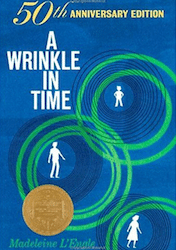
2 • Lonesome Dove, Larry McMurtry
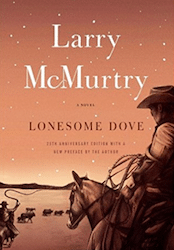
3 • The Ocean at the End of the Lane, Neil Gaiman
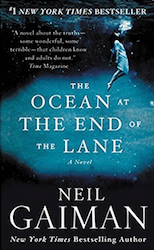
Diane Rehm: Is there a line you would not cross for children’s literature?
Neil Gaiman: Yes, and I had to discover that when I was writing my last novel Ocean at the End of the Lane. And figure out for myself if it was for children or for adults. And I decided it was for adults because I was not convinced that it offered hope, and I want all children’s literature, that I write, to have hope in it.
I do think the story offers hope, but not in the way children’s stories usually do. It’s the hope that children see more clearly than adults. It’s the hope that, as Shakespeare wrote in the Scottish play, “There are more things in heaven and earth, Horatio, Than are dreamt of in your philosophy.” That hole in your foot might be a wormhole. And can we all please live next to the Hempstocks, embodiments of the classic maiden-mother-crone archetype.
4 • Exit, Pursued by a Bear, E.K. Johnston
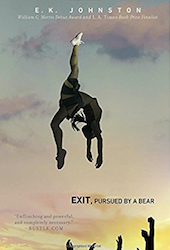
5 • Charlotte’s Web, E.B. White
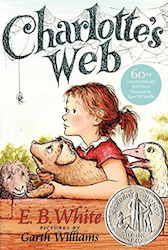
We live in those E.B. White-placed ellipses.
6 • all the Harry Potter books, J.K. Rowling
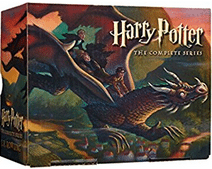
7 • Good Poems, Garrison Keillor
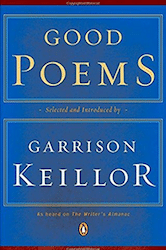
8 • The Warmth of Other Suns, Isabel Wilkerson
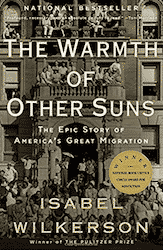
George Swanson Starling: “Do not do spite.”
Robert Joseph Pershing Foster: “It confirmed he wasn’t crazy, and that made him feel utterly alone. Yes, there was an evil in the air and this man knew it and the woman at the hotel knew it, but here he was without a room and nobody with a mind to do anything had done a single thing to change that fact.”
Ida May Gladney: “Now we ain’t got nothing to do with God’s business.”
9 • A Room with a View, E.M. Forster
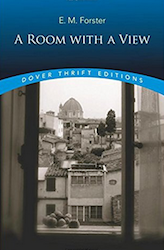
10 • A River Runs Through It, Norman Maclean
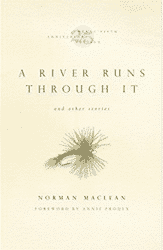
Top 10 (or So) Books That Inspired You
Your turn! Share your list. It doesn’t have to be ten—just a book or two that, like Glynn said, “moved me to do something, change something, create something, recognize that I could go beyond where I was.”
Photo by Paw Paw, Creative Commons license via Flickr. Post by Megan Willome, author of The Joy of Poetry.
Explore more inspirational books
__________
“Megan Willome’s The Joy of Poetry is not a long book, but it took me longer to read than I expected, because I kept stopping to savor poems and passages, to make note of books mentioned, and to compare Willome’s journey into poetry to my own. The book is many things. An unpretentious, funny, and poignant memoir. A defense of poetry, a response to literature that has touched her life, and a manual on how to write poetry. It’s also the story of a daughter who loses her mother to cancer. The author links these things into a narrative much like that of a novel. I loved this book. As soon as I finished, I began reading it again.”
—David Lee Garrison, author of Playing Bach in the D. C. Metro
- Perspective: The Two, The Only: Calvin and Hobbes - December 16, 2022
- Children’s Book Club: A Very Haunted Christmas - December 9, 2022
- By Heart: ‘The night is darkening round me’ by Emily Brontë - December 2, 2022
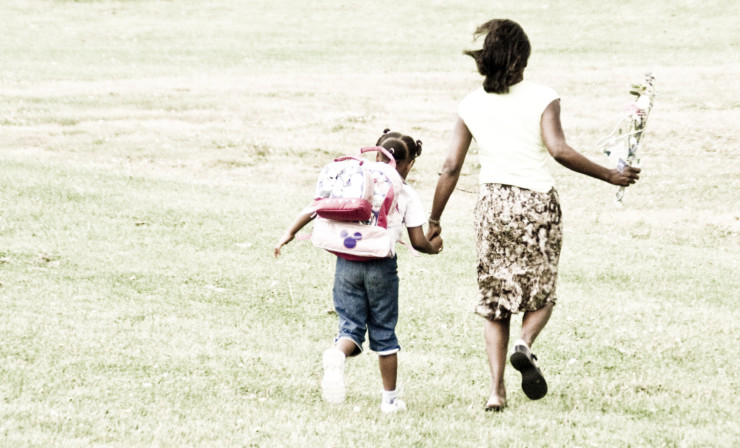

L.L. Barkat says
I love Glynn’s definition of an inspiring book. I also found myself thinking of the difference between “inspire” and “expire,” which led me to an even stronger sense that an inspiring book should be life-giving, life-altering in a profound and important way, not just something that made us feel “inspired” at any particular time.
It was really, really hard for me to choose 10 books. I found myself sitting with clusters of books in some cases. Or single books that made little more long-term impression on me than an idea that somehow propelled me to do or be something unexpected, something better.
I also was fascinated by your list, Megan, and how it focused on Love. I looked over my selections and thought it interesting that it probably focuses on freedom, the individual, and maybe voice. Yet my daughter, who just interviewed me for a profile and then went back and underlined patterns through 10 pages of transcript found that I say the word “connections” a lot, when it comes to what my visions for life and love and Tweetspeak are about. So it seems paradoxical to me, yet there it is: I am about connections, but I am about deep freedom and individual strength as well. 🙂
So my 10-ish list (with a few unavoidable clusters and a hopefully excusable inclusion of one of my own books, which seems weird to me but honestly it still inspires me to action and strength, to this day; the second book of mine I included is not on the “main list” but it is part of an important cluster):
1. A Wrinkle in Time:
The first book that, like Neil Gaiman, made me want to write. Except it took me forever to write fiction. 🙂 Also a book that spoke deep into my heart about freedom and voice and how far we will go to preserve it—even across the very universe itself. This is not something that has stopped working its way through me. Books can be that way, sometimes taking years to come to fullness in what they set before us a long, long time ago.
2. Emma:
Not a big Jane Austen fan, this one made me think about people differently—that they have their own ways in the world and that no matter how good my ideas seem to be they don’t matter if the ideas are crossing someone’s soul.
3. Radical Simplicity:
I sat outside daily for an entire year because of this book, and I paid attention to the smallest activity of Nature and I learned the loveliness of being mute and letting awe be my center rather than always needing to express myself or make a mark. I learned my own smallness and my greatness, understanding myself as part of an exquisite whole that sits just outside my door.
4. God in the Yard:
One chapter opens “Must I explain myself to a 1930’s Tudor?” while the opening chapter notes how inexplicable my new journey of sitting “nowhere” might seem to the neighbors, who might watch me “look at the clouds, while they make fish sticks and pick the day’s Play-Doh off their kitchen tables.” In the end, God in the Yard was a book that helped (and still helps me) realize I don’t need to explain myself. This might seem a small matter, but to me its about not having to ask permission (which is partly what we’re doing when giving explanations) to be who I really am.
5. The Tale of Genji and Adrienne Rich’s The Dream of a Common Language.
These two books are a cluster that informed my writing of The Novelist and come together as a force regarding the individual’s ability to confront our absolute aloneness in the world and our absolute powerlessness—through the power of Imagination and image- and language-crafting. So that, in the end, we are never alone and never powerless.
6. The Artist’s Way
This book brought it home: we cannot be in the world and fulfill our greatest possibilities if we don’t understand and embrace our personal truths, then shed the layers that obscure them and hinder us from acting out of our deepest, most beautiful selves. The paradox in this book is that sometimes we have to disconnect to connect.
7. Spark
I will always exercise because of this book, especially because of the info about how exercise influences learning and aging.
8. Brain Rules
I will always take care to sleep because of this book. I no longer stay up until all hours of the night. It’s just bad for the brain and I won’t do it except on rare occasions as a guilty pleasure.
9. Curious
I read and read and read and read because of this book. And Tweetspeak has become a place that emphasizes literacy because of it.
10. Number Sense and Number Nonsense (clustered with Mathematical Mindsets and maybe circling nicely back to A Wrinkle in Time)
I am going to relearn math from the beginning. I am writing about math (first piece just went up at Edutopia this week! :). Someday I will probably publish books about math. It’s something akin to when I decided I needed to master the sestina. But it’s far more. Math feels like a promise to me right now, though I’m not sure what the promise is. I don’t need to know. I’m on the journey.
Thanks for sharing your top 10, Megan. I’ll probably pick up a good handful of these and read them too. 🙂
Megan Willome says
I think a sestina is way easier than relearning math. But I may be showing my ignorance.
How fun that “Wrinkle” is on yours too, but for different reasons. “Emma” is another favorite. That was the first time I remember realizing, “Oh, it’s okay not to like this narrator–she’s kinda terrible.”
I love how you shared how these books have impacted your writing and learning and, well, publishing. It’s like getting a behind-the-scenes tour of your mind.
L.L. Barkat says
Ha! 🙂
A good sestina is hard to come by. I like to master things that are hard to come by and then help others master them, if they have an interest.
Relearning math is going to connect me to my Sonia, who has an incredible mind for math and always dreamed of making a math book. My Sara is a math skeptic, who, however, also has a strong math ability (but no interest in pursuing it)—so it’s a great thing we can disagree about in a hearty and fun way (Sara loves to argue, and I love to give her an open place for that).
Overall, it seems to me that math is a kind of code that ends up being handed to an elite group. I’ve always been one to dislike that sort of thing (elite group stuff) and want to find my place in it… not so I can become elite, but so I can invite others into the space, where they can explore freely and get the benefits of knowledge and mastery.
So, off we go. Into the wild blue math yonder, where through the power of numbers we can explore freedom (and counter L’Engle’s “It,” wherever we find it lurking and trying to control and erase us).
Glynn says
Here are my 10 books:
Augustine of Hippo by Peter Brown
The Hobbit / The Lord of the Rings by J.R.R. Tolkien
Conversation in the Cathedral by Mario Vargas Llosa
Don Quixote by Cervantes
Great Expectations by Charles Dickens
Four Quartets by T.S. Eliot
Spoon River Anthology by Edgar Lee Masters
The Habit of Being by Flannery O’Connor
October Light by John Gardner
The Sound and the Fury by William Faulkner
Megan Willome says
Glynn, “The Hobbit/LOTR” are easily in my Top 20; I do prefer “The Hobbit,” though. I read “Great Expectations” because of Karen Swallow Prior’s “Booked” and loved it. “The Sound and the Fury” haunts me because it shows there are many ways to tell a story.
Adding “Spoon River Anthology” to my list. You’ve written about it before, and it seems like something I will really like.
Don Shull says
Lord of the Rings– the grind of learning names, places, data, need not spoil ecstasy
Complete Poetry of John Donne–Intense and theologically rigorous Christianity not inconsistent wit overwhelming poetry
Wind in the Willows–a book need not have any paraphrasable content to enchant
Boswell’s Life of Johnson–a non fiction canonical work can be as life affirming as potato soup
Pride and Prejudice–deft use of language and acute perception of people In a page turner
Pamela–absence of guiding narrative doesn’t prevent immersion in a character’s life
Clarissa– sometimes it’s only after 250 pages that a book causes you to miss favorite tv shows
Anonymous Queste del Saint Graal–allegory pushing asceticism can make you feel with characters to the point of tears; after many readings the end can still “make you feel like the top of your head has been taken off
Dante’s Paradise–as my son said, it makes you cry and each page is better than the previous one
Boethius, Consolation of Philosophy–clarity; thinking as an almost physical pleasure
Camile Paglia–snark that is not only delightful but is profoundly insightful
Megan Willome says
Don, what a great list with so many new to me.
“The Wind in the Willows” is such a favorite that when recently challenged to write a personal mission statement, I drew it from the chapter “The Piper at the Gates of Dawn.” And you captured why “Pride and Prejudice” holds up well to multiple re-readings.
Sandra Heska King says
My list – in no particular order and subject to change:
1. Little Women – Louisa Alcott
Ignited my dream of becoming a writer
2. Adventure of Ascent – Luci Shaw
A fresh way of looking at aging–and adventure. (Luci autographed it for me–“For Sandy–On the great adventure”)
3. God in the Yard – L.L. Barkat
Permission to simply. sit. And play towards God.
4. The Butterfly’s Burden – Mahmoud Darwish
On a dare. A literary and cultural stretching.
5. Booked – Karen Swallow Prior
Permission to be a promiscuous reader.
6. As Silver Refined – Kay Arthur
Colored how I respond (or try to respond) to disappointments.
7. The Nun’s Story – Kathryn Hulme
Ignited my dream of being a nurse and becoming involved in missions
8. Open Windows – Philip Yancey
Encouragement to strive for high literary standards as a writer.
9. An American Childhood – Annie Dillard
“When you pry open the landscape, you find wonders.” And the details in her writing.
10. Gift from the Sea – Anne Morrow Lindbergh
Created a hunger for balance, simplicity, and centering. (And now I live near the sea.)
And anything by Mary Oliver.
Because – “Pay attention. Be astonished. Tell about it.
Sandra Heska King says
P.S. I loved A Wrinkle in Time, too. I read it years and years ago before I ever knew who Madeleine was. I lost my original book but have since replaced it to reread. I think I’ll order it right now for my oldest grand and order her to read it.
Megan Willome says
Sandy, this list is so you! Karen’s book impacted my reading as well. And I think “Little Women” had the exact same effect on me, letting me know that being a writer was a possibility .
Sandra Heska King says
Guess what came yesterday? Good Poems. I couldn’t help myself. (Thanks, John.)
Megan Willome says
Uh oh! Methinks your poetry shelf is getting full.
Prasanta says
Megan, though I don’t have my top ten all figured out, I know for sure A Wrinkle in Time is on my list, too. That book unlocked my imagination and sent it soaring to new heights. I feel I am in great company as I have this book in common with both you and L.L.! 🙂 I adore that book.
And, I love E.B. White’s books, too. Though I’m not sure it’s in my personal top ten, Charlotte’s Web, in my view, is a must-read book because of the endearing message of being special and wanted, and that friendship may come from unlikely places, and as you wrote, the story is very well-written. I think so many (young and old alike) need to know and keep hearing that message. (I wonder how many of these fabulous YA books are still on school reading lists?)
I so much enjoyed your top 10 list, as well as the others who have posted here, and how they reveal how unique and (and alike) we are! I’d enjoy collecting top 10 lists from so many people. 🙂 Wouldn’t that be fun?
l also wonder how much of our “top ten lists” change through the years. Surely, some stay the same (like a Wrinkle in Time), but if we are reading as the years go by, some do change.
Megan Willome says
Prasanta, yes, I think there are definitely changes. Other than “Wrinkle,” can you name one or two that would be on your list?
Prasanta says
Yes, here are few more! 🙂
1) A Wrinkle in Time
2) Jane Eyre by Charlotte Bronte
3) The First Circle by Aleksandr Solzhenitsyn
4) The Great Divorce by C.S. Lewis
5) Frankenstein by Mary Shelley
Megan Willome says
Tell me about “The First Circle.” It’s the only one on your list I haven’t read.
John Willome says
1. This Present Darkness changed my prayer life.
2. Sacred Marriage changed my perspective on marriage.
3. The Goal taught me more about business than anything I read in business school.
4. The Gift of the Red Bird showed me how someone can seek God while in tremendous pain.
5. My Utmost for His Highest formed most of my theology.
6. Me Myself and Bob taught me the danger of a reckless BHAG (see Good To Great–NOT in my top 10).
7. My Own Country gave me insights into the homosexual community.
8. The Presidents Club gave me hope that humans can rise above politics.
9. In the Garden of Beasts showed me how a society can be led into a terrible mob mentality, overwhelming the good people with evil before they know it or can do anything about it.
10. The Joy of Poetry taught me that if I don’t understand a poem it doesn’t mean I’m stupid.
Hey, look at me! I’ve read 10 books!
Megan Willome says
Well, hi there. 🙂
“My Own Country” is my favorite of Abraham Verghese’s books. I think it’s also about him discovering who he is, and it’s a bit of a mystery as he solves the puzzle of what’s happening in this small Tennessee community. You got me to read “The Goal,” and it’s still something we refer to, looking for Herbies. Several of these we’ve shared, really–“Gift of the Red Bird,” “Me, Myself, and Bob,” “The President’s Club,” “Sacred Marriage.”
But one you’ve raved about that I haven’t read is “In the Garden of Beasts,” just not wanting to go there right now. I did love “Isaac’s Storm,” though, so there’s no reason I won’t love this one too.
L.L. Barkat says
I am fascinated by #6. Tell me why Good to Great is not in your top 10 and why Me, Myself and Bob is? (I’ve not read the latter, and I’m interested to hear. 🙂 )
Also. who is the author of The Goal, and what’s the best thing it taught you about business?
John Willome says
Me, Myself, and Bob is the story of the rise and fall of Big Idea Productions (Veggie Tales) as told by the founder, Phil Vischer. Basically, he go hold of Good to Great, came up with a BHAG and then allowed the pursuit of that BHAG to drive the business into the ground. I think Good to Great (I haven’t read the whole thing, just part of it) tends to encourage people to approach their business from a worldly perspective, which is fine if you have no regard for God, but as a Christian I think it leaves out some aspects. “Get the right people on the bus.” Yes, I agree. There’s some good stuff in there. But a Big Hairy Audacious Goal (BHAG) can very often can be unwise. https://www.amazon.com/Me-Myself-Bob-Talking-Vegetables/dp/1595551220/ref=sr_1_1?ie=UTF8&qid=1506086810&sr=8-1&keywords=me+myself+and+bob
The Goal is a book I read my junior year in college. It is a novel written by Eliyahu Goldratt. It teaches manufacturing and cost accounting principles, but it does it in novel format. You might think, I don’t get into manufacturing, but you’d be surprised the areas of business it pertains to. It teaches the Theory of Constraints and it applies to almost anything. If you have a process for getting a book published, for example, and you are frustrated that things get hung up and you don’t know why, it teaches you how to look for the bottlenecks in the system (the Herbie that Megan refers to in her comment) and focus on increasing that bottleneck’s capacity and how to make it work more efficiently. Eventually, you will get that bottleneck working so efficiently (for example, your editing process) that it will reveal another constraint that is now slowing things down more than the original constraint (perhaps copyright permissions). https://www.amazon.com/Goal-Process-Ongoing-Improvement/dp/0884271951/ref=sr_1_1?ie=UTF8&qid=1506086422&sr=8-1&keywords=the+goal+goldratt
Goldratt wrote another one on sales and marketing called “It’s Not Luck” that is pretty good too, but not quite as powerful as The Goal (at least for me).
L.L. Barkat says
Ordered The Goal from my library (sounds a bit like The Plateau Effect, which might also belong on my Top 10, making it a Top 11 😉
I read through some of the reviews about Me, Myself, and Bob. Does he address the issues from a business perspective, or is it more a spiritual interpretation of failure? (I admit that I believe that a wonderful dream, no matter how inspired, still has to be handled effectively if it’s part of a business, and I’m wondering if their success was simply too rapid for their company structures and maybe his personal leadership toolkit to handle).